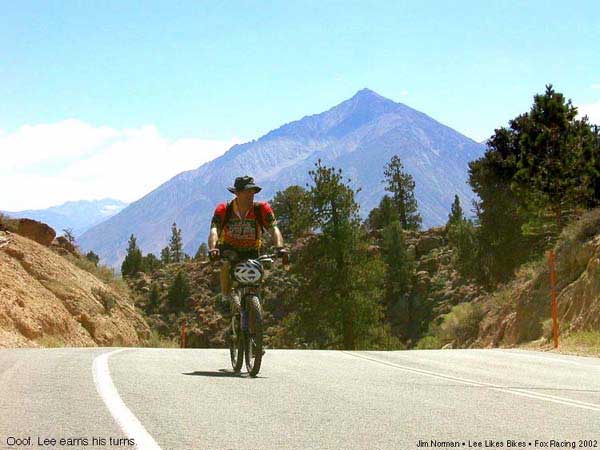Indoor training: Do this once a week
Workout design involves myriad variables and some pretty complex science. To get the greatest possible benefit from your workouts, you should work with a qualified trainer.
But: You can reap 90% of the benefits with a much simpler approach. Here is a very basic, pragmatic way to design your own interval workout on the indoor trainer.
Turn the dials
Any performance goal, whether it’s pulling a strong BMX lap or winning an XC race, has two variables:
1. Intensity. How hard/fast are you going? You can measure this by perceived exertion, speed, heart rate or power (wattage). The more accurate your measurement, the better. Heart rate is good. Power is best.
2. Duration. How long must you maintain that intensity? The shorter the duration, the higher the intensity — and vice versa.
Each riding/racing discipline has its standard requirements:
BMX/DS/4X: – 100% effort for about 30 seconds.
DH – Bouncing on red line for 3-5 minutes.
Super D – At or near red line for 10-20 minutes, with some extra-hard efforts to keep Mark Weir behind you. 🙂
XC – Moderate pace for 60+ minutes, with extra-hard climbs and quick accelerations mixed in.
Where do you want to get stronger? Sprinting out of the corners? Short, steep climbs? Long, mellow climbs?
Pick an interval length that matches your goals and weaknesses. I want to climb better, so I need to do some longer, 10-20 minute intervals (although I prefer sprinting). If you want to work multiple systems, do them on different days.
Warm up
Pedal for 15 minutes easy, with some harder efforts mixed in. Olympic BMX coach Greg Romero says you should warm up the specific energy system you’re working. If you’re doing short sprints, warm up with short, hard bursts (are you gravity racers reading this?). If you’re doing longer intervals, make your surges longer but a bit less intense. At the end of your warmup, you should be ready to pin it.
 A great reason to be in great shape: To train for the climb up SoCal’s awesome San Juan Trail, I might mix some short, hard efforts with sustained, moderate pedaling. |
Work
Go as hard as you can for your prescribed time. If your interval is much longer than a minute, you’ll have to pace yourself.
That’s a key skill — to know exactly how hard you can pedal for X period of time. When I was serious about Super D, I knew I could sustain 173-175 beats per minute with good form, and that I got stupid around 177 bpm. In the pedaling sections, no matter what was going on, I kept it at 175. If you out-pedaled me there, so what — I got you in the corners. Or not.
Go for it. Quality is key!
Rest
Spin easy until you feel like you can do it again. For longer intervals, the standard rest period is equal to the work period. If you’re concentrating on sprint power, give yourself a few minutes to fully recover. Quality!
Repeat
Do this as many times as you can with good power and form. Stop before you slow way down or get sloppy. Quality!
Cool down
Spin easy to 10-15 minutes. Imagine yourself ripping your favorite trail. Quality braaap!
Get stronger
As your fitness improves, you can:
– Pedal even harder during the interval. This makes you faster and more powerful. BMX, 4X and DS.
– Reduce your recovery time. This helps you recover faster from extra-hard efforts and sustain a higher overall pace. DH, Super D and XC.
– Do more intervals. Great for endurance. You are making it to the finals, right?
This workout will get you pretty far — much farther than not doing intervals at all. When you reach that “90%” threshold, you’ll benefit from a more detailed, customized program. Check with James Wilson or, if spring has sprung, go ride outside!
Braaap!
— Lee


Comments are closed.